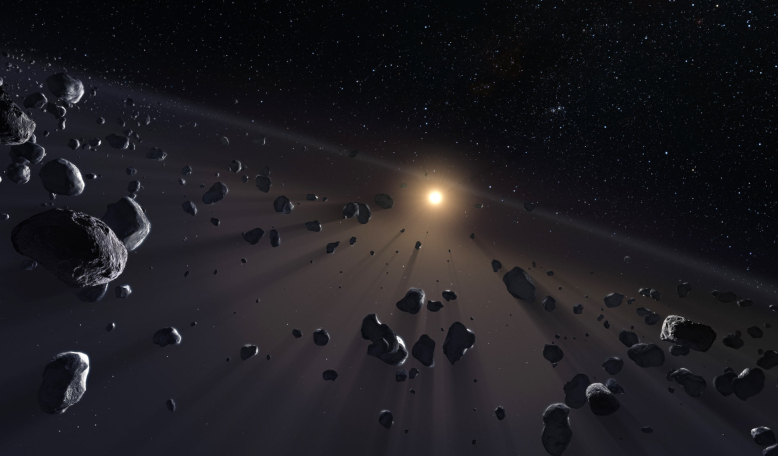A six year study to search for phenomena such as supernovae and galaxy clusters that could help scientists calculate how fast the Universe is expanding, has instead discovered 461 new objects in the outer Solar System.
Found as part of the Dark Energy Survey (DES), which as its name suggests is designed to help uncover the nature of dark energy, these objects are among a population of small bodies that orbit beyond Neptune called trans-Neptunian objects (TNOs).
TNOs are classed as minor or dwarf planets and indeed Pluto is now considered a TNO, as is Eris, the second-largest known dwarf planet in the Solar System.
For comparison, Eris, like Pluto, is a little smaller than Earth's Moon. In fact, Eris has a very small moon of its own called Dysnomia.
The term TNO is used interchangeably with KBO, which stands for Kuiper Belt Object; the only difference is their distance from the Sun.
Both types though are thought to be rocky or icy leftovers that did not combine to form the more-massive and larger bodies seen today, so observing and mapping TNOs gives scientists a window into processes in the early Solar System.
There are estimated to be perhaps 70,000 TNOs, each at least 100 kilometres across, but so far only a few thousand have been detected. The 461 detected by the DES team will help boost those numbers.
Led by Pedro Bernardinelli at the University of Pennsylvania, this is not the first time that this team has given us an insight into objects at the outer edges of the Solar System.
Last year the team found 300 minor planets including 139 new objects that were not previously published.
This time around the team have doubled the number of detections as initially 817 objects were observed in this latest study. However, as before, some of those were already known from past surveys.
Bernardinelli and colleagues new sweep of the skies though has thrown up a few new interesting objects, including nine new “extreme” TNOs, four new Neptune Trojans, several new objects with high inclinations and an Oort cloud comet named after its discoverers; C/2014 UN271 (Bernardinelli-Bernstein).
“The DES catalog represents a significant increase in the number of known dynamically detached objects, including new extreme and high-q TNOs, as well as objects in distant resonances or high inclinations, which are relevant to more detailed hypothesis of the formation of the outer Solar System”, the authors write in their paper.
This huge haul means that it is the second largest TNO catalogue from a single survey to date, as well as the largest catalogue with multi-band photometry, the authors add.
The new catalogue has been submitted for publication, and is available on preprint server arXiv.











